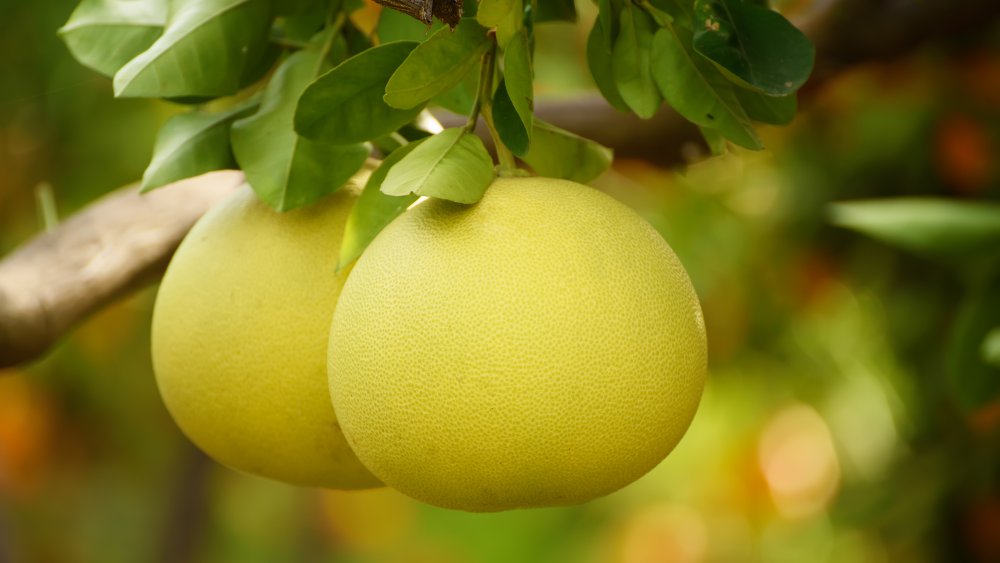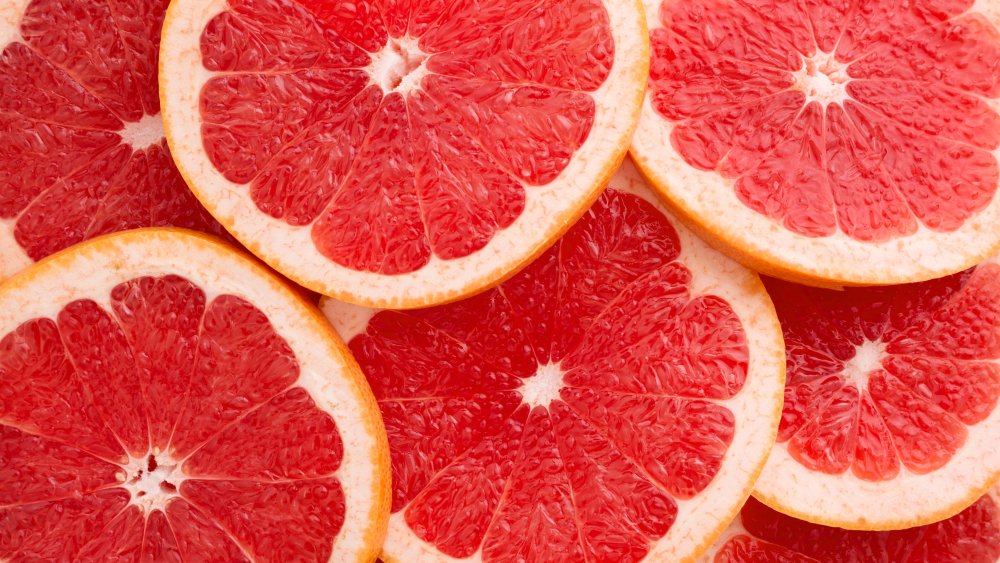The Real Difference Between Pomelos And Grapefruits
Pomelos and grapefruits have a lot in common. They're both large citrus fruits that are full of vitamin C, antioxidants, and fiber (via Pediaa). In fact, the grapefruit is actually a hybrid of the pomelo and the sweet orange. This hybridization occurred naturally (via Perdue University). Despite their commonalities, the fruits aren't interchangeable.
Indigenous to Southeast Asia, the pomelo is the largest member of the citrus family and can grow to be the size of a watermelon. The grapefruit was discovered on the Caribbean island of Barbados. Significantly smaller than pomelos, grapefruits generally grow to be about the size of a human fist. In the United States, grapefruits are mostly grown in Florida and southern California (via Food Network). Pomelos are also grown in Florida and California as well as in Arizona and Texas (via Food Forward), depending on the time of year. And Australia and the Philippines are major producers of pomelo exports.
Differences between the two fruits
The physical differences between the fruits go beyond size. When it comes to flesh color, pomelos are semi-transparent and have various hues, including dark pink, peach, yellow, and yellow-green (via Getty Stewart). Grapefruits are usually either white or pink (via Nature and More). Grapefruit peels are often yellow-orange while unripe pomelos have green peels that turn yellow as the fruit ripens. The pomelo also has a thicker rind than the grapefruit (via Perdue University) and has more of an oblong shape.
The pomelo has a milder and less bitter flavor than the grapefruit. In Thailand, the pomelo is often eaten with salt and chili powder. It can also be incorporated into a salad, its juice can be used in a marinade or a salad dressing, or it can be enjoyed on its own (via The Spruce Eats). The rind can be candied or turned into a marmalade. Pomelo juice and seeds have also been used as medicine in Southeast Asia. Grapefruit can be eaten by itself, used in salads and even cocktails, or as a component of a seafood dish (via BBC).

